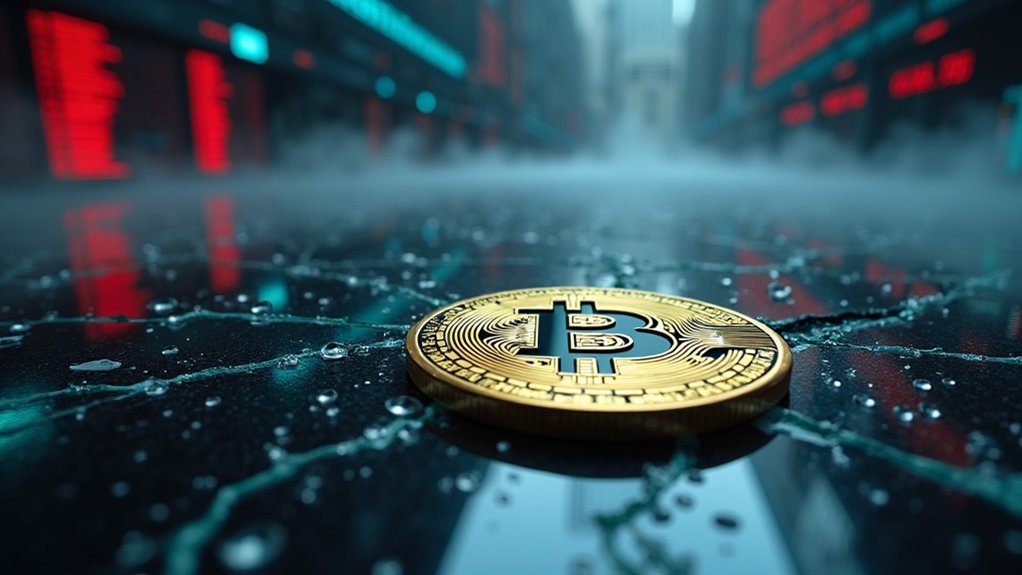Solana is a cutting-edge blockchain platform that's turning heads in the crypto world. Launched in 2020, it processes transactions at lightning speed – up to 65,000 per second – while keeping costs remarkably low at just a fraction of a penny. Its unique combination of Proof of History and Proof of Stake technology makes it a formidable player in the blockchain space. Despite occasional network hiccups, Solana's innovative approach to scalability and real-world applications hints at an intriguing future for digital finance.

Four revolutionary forces are reshaping the blockchain landscape, and Solana stands at their intersection. Like a well-oiled machine operating at breakneck speed, this high-performance blockchain platform has captured the imagination of developers and investors since its 2020 launch by Anatoly Yakovenko and his forward-thinking team.
While other networks crawl along at a snail's pace, Solana dances through transactions with the grace of a digital ballerina, processing up to 65,000 operations per second. The platform's remarkably low transaction costs of $0.00025 make it an attractive alternative to other blockchains. The platform's developer-friendly tools have attracted a growing community of innovators.
At its heart, Solana represents a clever marriage between two innovative consensus mechanisms: Proof of History (PoH) and Proof of Stake (PoS). Think of PoH as a blockchain's timestamp – a digital chronicler that brings order to chaos by recording the passage of time itself.
Solana's groundbreaking fusion of PoH and PoS creates a digital timekeeper, orchestrating blockchain chaos into clockwork precision.
This unique approach, combined with parallel transaction processing, allows Solana to achieve what many thought impossible: blazing speed without sacrificing decentralization. Unlike traditional finance systems, Solana operates without intermediaries, making it more accessible and cost-effective.
The platform's native token, SOL, serves as the lifeblood of this digital ecosystem. With a hard cap of 489 million tokens and about 370 million currently in circulation, SOL has ridden waves of market sentiment to reach impressive heights.
Yet, like any pioneering technology, Solana faces its share of growing pains. Network outages have occasionally dimmed its bright promise, while skeptics raise eyebrows at the substantial hardware requirements for validators.
Despite these challenges, Solana's ecosystem continues to flourish. Its infrastructure supports everything from NFT marketplaces that buzz with digital art trades to DeFi applications that reimagine traditional finance.
The platform's minimal transaction fees – mere fractions of a penny – have made it a favorite among cost-conscious developers and users alike.
Looking ahead, Solana's trajectory seems pointed firmly upward. The launch of a blockchain-integrated mobile phone signals its ambition to bring crypto technology into everyday life.
While competitors nip at its heels and technical hurdles remain to be cleared, Solana's blend of speed, efficiency, and innovation positions it as a compelling answer to blockchain's scaling challenges.
Frequently Asked Questions
How Do I Buy Solana Tokens and Where Can I Store Them?
Solana tokens can be purchased on cryptocurrency exchanges like Binance or Coinbase using fiat currency. They can be stored in digital wallets such as Phantom, Solflare, or hardware wallets like Ledger.
What Are the Main Differences Between Solana and Ethereum?
Key differences between Solana and Ethereum include transaction speeds (Solana: 2,600-4,000 TPS vs Ethereum: 15-30 TPS), fees (Solana: $0.00025 vs Ethereum: $0.30-$50), and consensus mechanisms (Solana: PoH+PoS vs Ethereum: PoS).
Is Solana a Good Long-Term Investment Compared to Other Cryptocurrencies?
While Solana shows strong technological advantages and ecosystem growth, investing carries significant risks. Its potential for high returns must be weighed against network reliability issues and market volatility. Individual research remains essential.
How Does Solana Achieve Such High Transaction Speeds?
Solana achieves high transaction speeds through its Proof of History timestamping, parallel transaction processing via Sealevel runtime, and optimized network architecture including Gulf Stream and Turbine protocols for efficient data handling.
What Are the Biggest Challenges and Risks Facing Solana's Network?
The biggest challenges facing Solana's network include frequent outages during peak periods, scalability limitations with state growth, centralization risks due to high validator costs, and increasing competition from other blockchain platforms.









